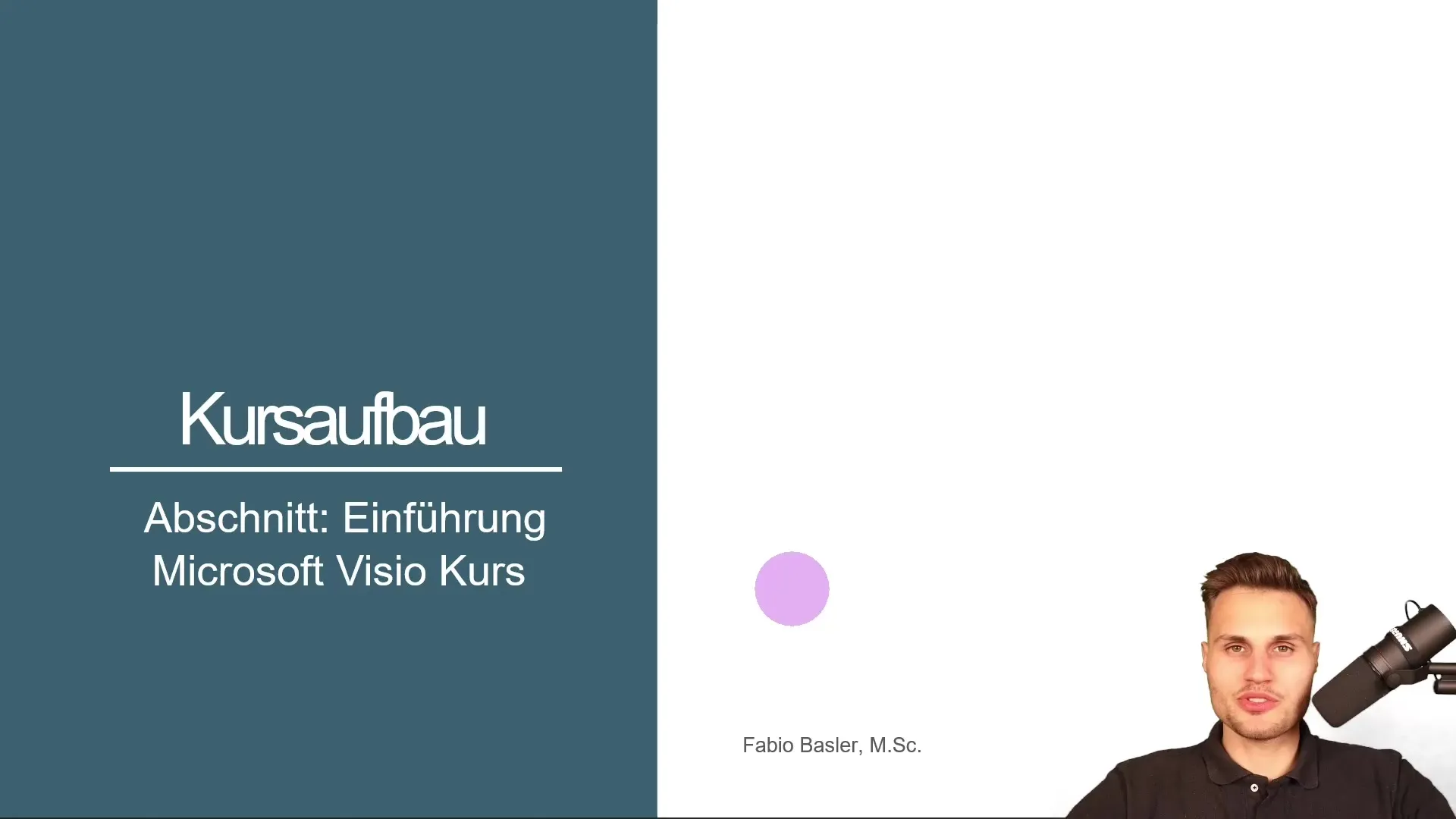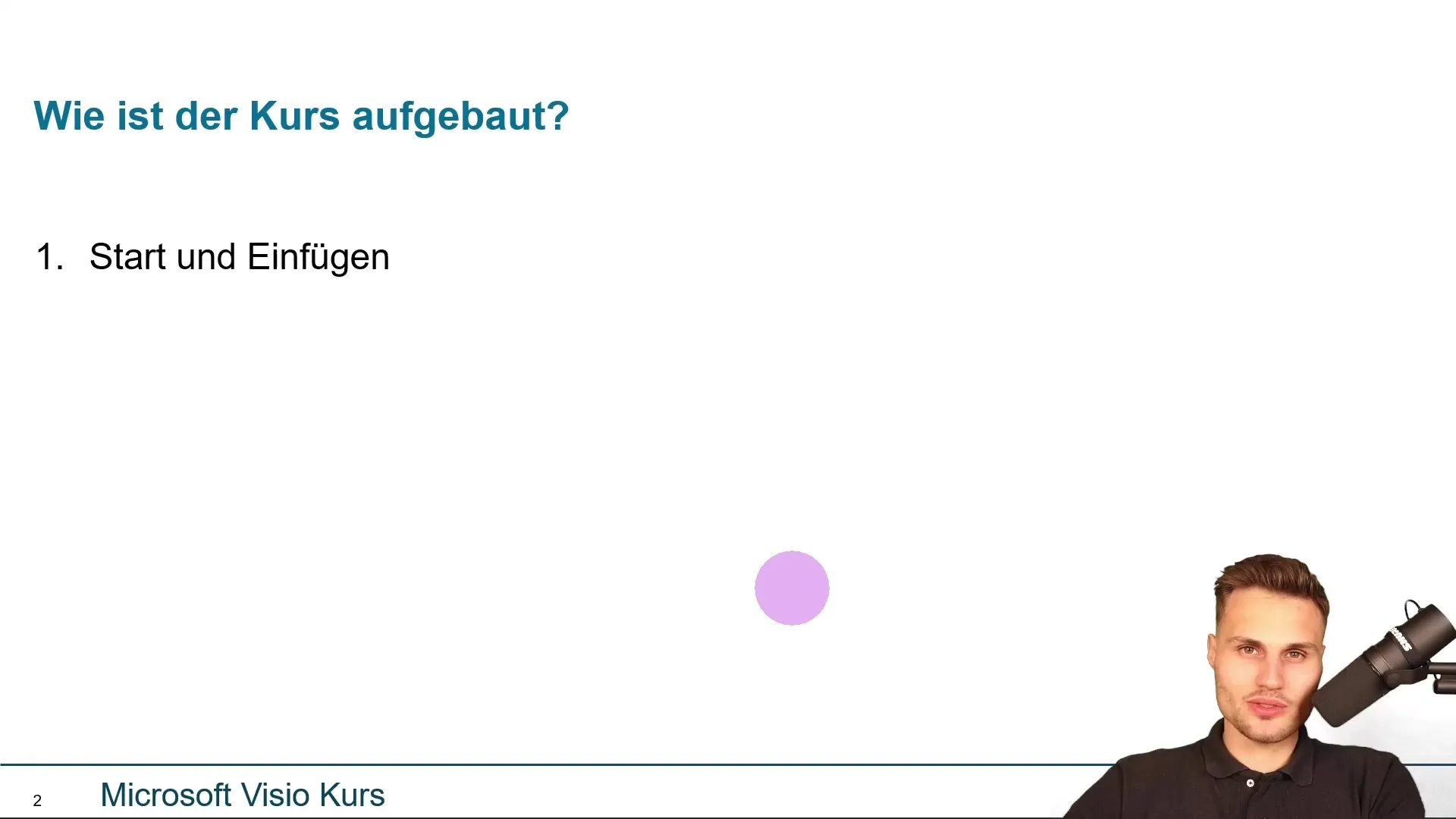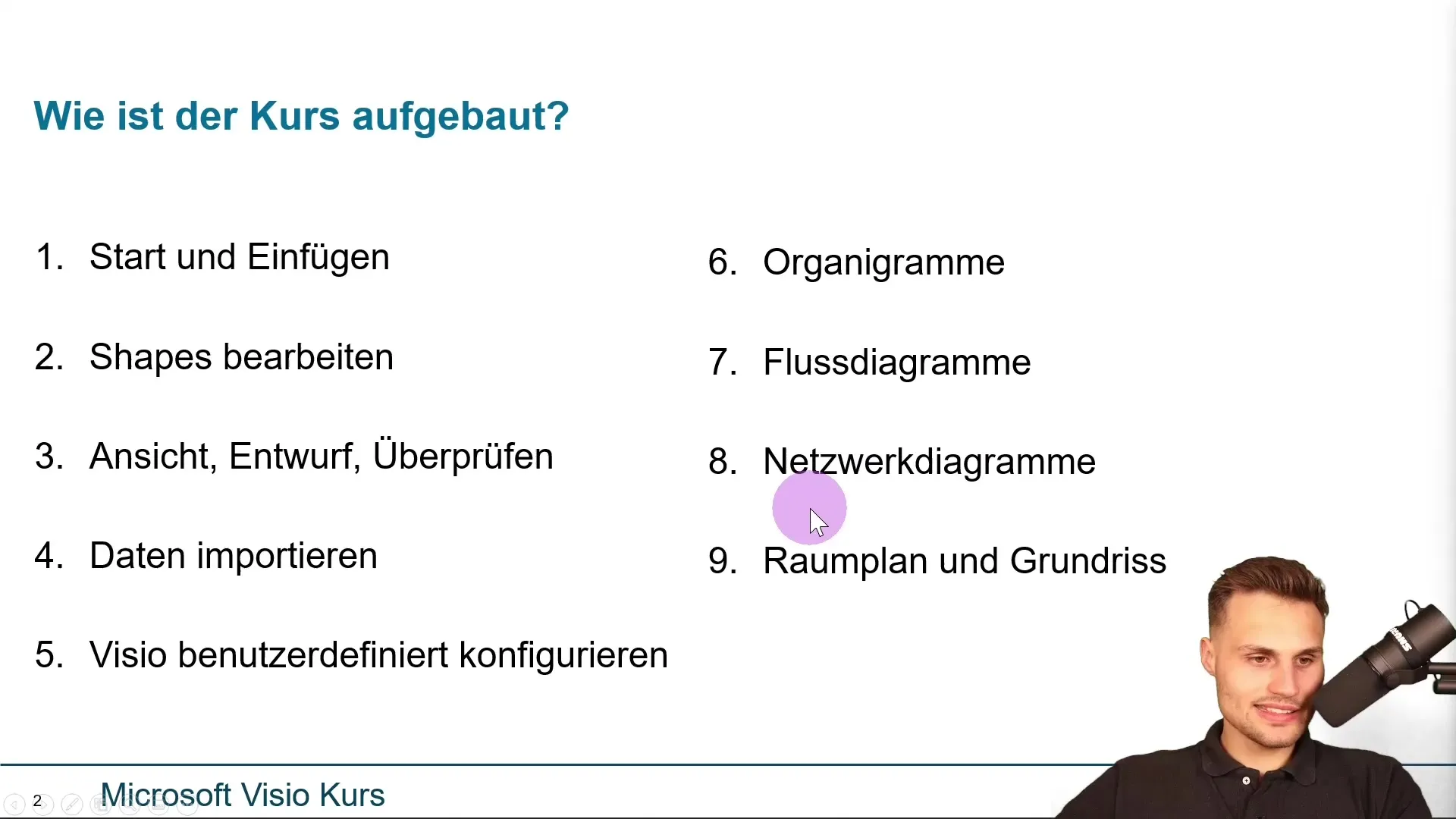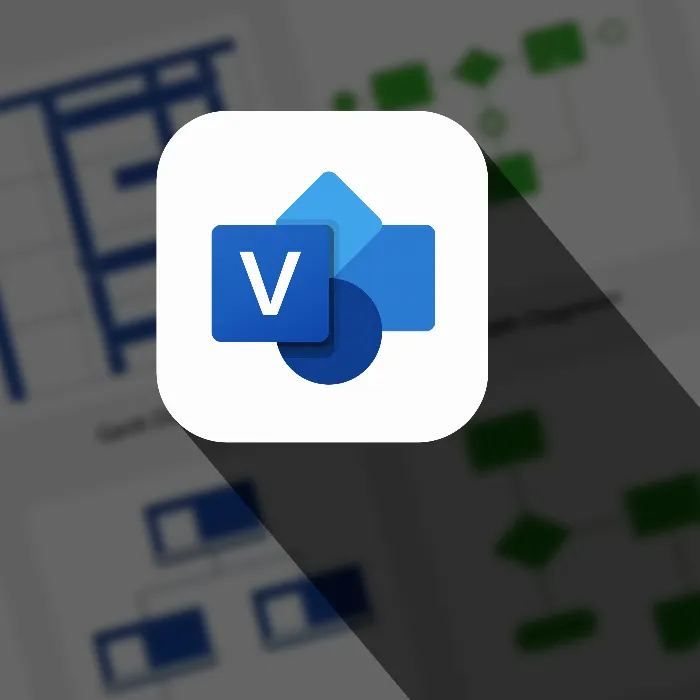Before you delve deep into the features and possibilities of Microsoft Visio, it is helpful to get a clear overview of the course structure and learning objectives. This guide will lead you step by step through the structure of your Visio course, so you are well prepared.
Key Learnings
- The course covers the basic functions of Microsoft Visio.
- Various visualization options as well as handling of shapes and templates are covered.
- The course is divided into several parts that deal with different types of diagrams and their application.
Step-by-Step Guide
1. Course Overview and Objectives
The first step is to answer the basic questions: What is Microsoft Visio and how can it help you in your daily work? In the course, we start with an introduction to the software, its functions, and the licensing model. You will learn how to obtain the software and how the user interface is structured.

2. Getting Started with the User Interface
After the introduction, we set up the software so that you can quickly familiarize yourself with it. The focus is on viewing the tabs. We specifically look at the "Home" and "Insert" tabs. Here you will learn how to configure your drawing canvas and insert elements and text.

3. Working with Shapes and Templates
A central aspect in Visio is shapes. This step shows you how to insert shapes into your diagrams. You will learn what templates are and how the shapes are structured in them. We also look at the different templates and layouts available.
4. Layout and Design Options
The next step involves designs and layouts. Here you will learn how to adjust the size and layout of your drawings. Special attention is also given to the "Design" tab, which provides helpful design options.
5. Data-driven Visualizations
Another exciting topic is connecting Visio with external data sources. I will explain how you can integrate data from Excel tables or Microsoft Access to then link them with your shapes. This allows you to create data-driven diagrams.
6. Customizing the User Interface
To work efficiently with Visio, it is important to customize the user interface. I will show you how to customize the quick access toolbar so that you can quickly access important functions.
7. Advanced Diagram Options
After the basics, we will focus on more advanced diagram options. In this part, you will learn how to create organizational charts and which specific shapes are used for them. Importing images into your diagrams will also be discussed.
8. Visualizing with Different Diagram Types
Here we will explore how to work with flowcharts and create them from scratch. We will analyze the existing templates and learn how to customize them for your purposes. Network diagrams and floor plans will also be covered.

9. Summary Review
In the final step, there will be a summary where we review all the topics covered. You will see that you now know all the necessary functions and applications of Microsoft Visio.
Summary
In this course, you have learned the basic functions of Microsoft Visio. Starting from the user interface to different types of diagrams and data integrations, you have covered all the important aspects. This structure helps you utilize the software effectively.
Frequently Asked Questions
What is Microsoft Visio?Microsoft Visio is a visualization software specifically designed for creating diagrams and graphics.
What features are included in Visio?Visio offers a variety of features, including creating organizational charts, flowcharts, and integrating data from external sources.
How can I customize the user interface?You can customize the quick access toolbar and menu to optimize your workflow.

